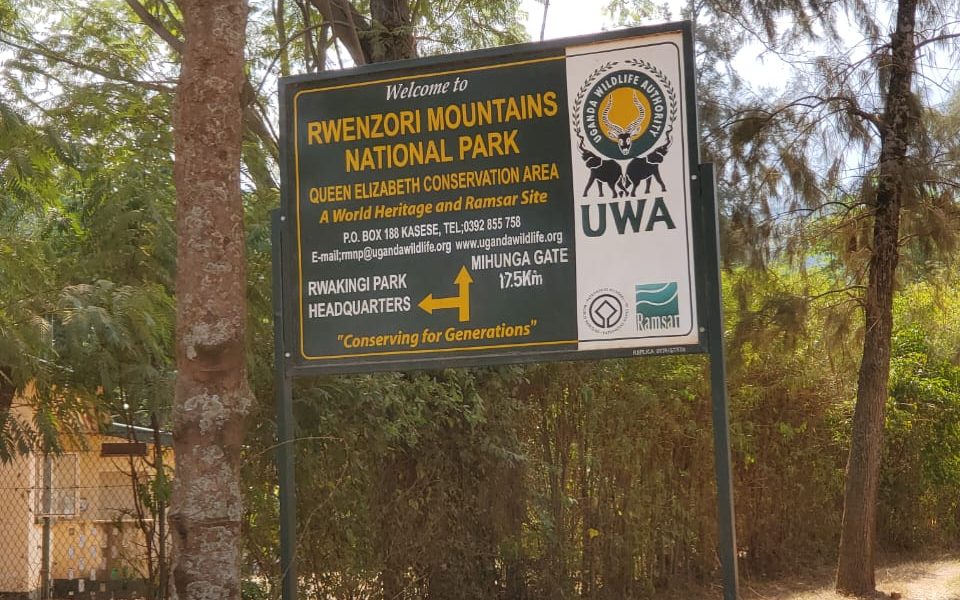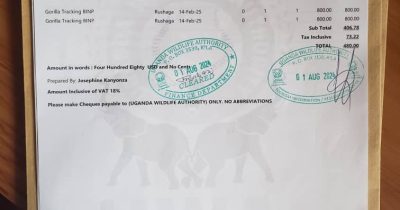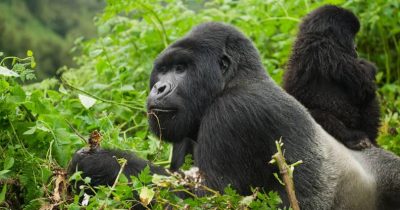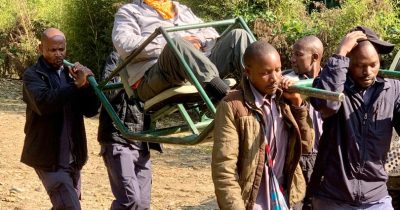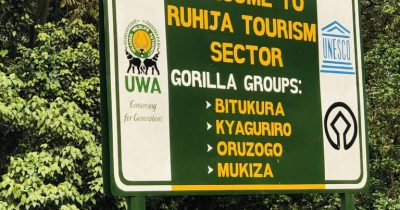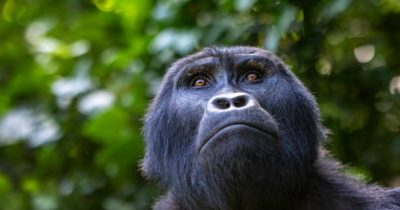UNESCO World Heritage Sites in Uganda
In Uganda, a total of 3 (three) sites have been inscribed as United Nations Educational, Scientific and Cultural Organization (UNESCO) World Heritage Sites. They include Bwindi Impenetrable National Park, Kasubi Tombs, and Rwenzori Mountains National Park. These are places of cultural/natural heritage significance as per the UNESCO World Heritage Convention which dates back to 1972.
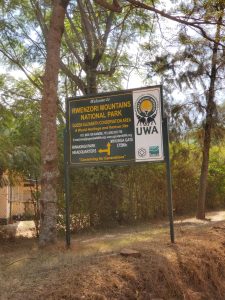
Kasubi Tombs
The Kasaubi tombs in Kampala, Central Uganda were listed among UNESCO World Heritage Sites in 2001. This cultural site was originally constructed in 1882 and later, it was converted as a burial site for the Buganda Kings/Kabakas. Kasubi tombs are valuable spiritual sites in the Buganda Kingdom. The main building that was formerly built in 1882 as a palace was later turned into a tomb in 1884.
During its inscription period, only 4 tombs in the complex, made of wood, reeds, and thatched roofs were available. The 4 former kings/Kabakas who was buried in Kasubi tombs include King Muteesa 1 whose reign of power lasted from 1835 to 1884, Mwanga 11 from 1867 to 1903, Daudi Chwa 11 ruled from 1896 to 1939 and lastly, Sir Edward Muteesa 1924 to 1969. Kasubi tomb’s structure is primarily comprised of grass thatch roof, wood material, reeds, elephant grass, and many other local materials. Many of the Baganda visit the site to fetch blessings given the belief that it is a spiritual site.
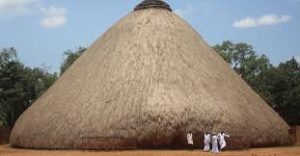
Bwindi Impenetrable National Park
Lying in Southwestern Uganda, Kanungu District, Bwindi National Park was officially inscribed as a UNESCO Site in 1994. The park lies within the Albertine Rift region and in an intersection of 3 ecological zones. Bwindi is dominated by the Albertine Rift montane forests and is an endowed destination with biodiversity.
The 331 sq. km Bwindi protects over 120 mammal species, 100 fern species, 200 montane forest butterfly species, and 350 bird species including forest species of birds. Among the important mammal species to explore on Uganda safaris in Bwindi National Park include mountain gorillas which total up to 459 individuals. Overall, fewer than 1063 mountain gorillas still live in the wild today and mainly occupy the lush forests of Bwindi, Volcanoes National Park Rwanda, Virunga National Park Congo, and Mgahinga Gorilla National Park –Uganda.
Bwindi Impenetrable National Park also supports a range of other mammal species besides mountain gorillas. These include chimpanzees, l’hoest monkeys, pottos, baboons, red-tailed monkeys, spectacled galagos, Demidoff’s galagos, and more. Bwindi also offers refuge to elephants, bush pigs, civets, bats, side-stripped jackals, giant forest hogs, yellow-backed duikers, black-fronted duikers, clawless otters, etc.
A home to endemic bird species
Bwindi holds over 23 species endemic to the Albertine region and other resident species. The checklist of birds in Bwindi Impenetrable Forest National Park includes the Archer’s robin-chat, green broadbill, blue-headed sunbird, dusky crimson wings, pied kingfishers, handsome francolins, Rwenzori turacos, ross’s turacos, woodland kingfishers, mountain masked apalis, malachite kingfishers, purple-breasted sunbird, mountain yellow warblers, broad-billed rollers, piping hornbills, white-thighed hornbills, and tropical boubou.
There are also papyrus gonoleks, priapic, African thrus, European rollers, lilac-breasted rollers, red-throated alethe, black-casqued hornbills, African firefinch, dusky twin spot, red-headed bluebill, zebra waxbills, pale-fronted nigrita, chestnut-breasted nigrita, Jameson’s antpecker, and more.
Adjacent to Bwindi, there are the Batwa and Bakiga communities known for their unique cultural performance, traditions, and distinct cultures. While on a safari in Bwindi, an addition of a cultural tour in the Batwa or Bakiga community is worth it. A Uganda tour in Bwindi Impenetrable National Park allows nature enthusiasts to engage in activities such as mountain gorilla trekking, gorilla habituation, hiking/forest walks, bird watching, and more.
Rwenzori Mountains National Park in Kasese
Located in Western Uganda is the Rwenzori Mountains National Park, home to the world’s legendary Mountains of the Moon. This was inscribed as a UNESCO Site in 1994 and is bordered by the Democratic Republic of Congo (DRC). The Rwenzori Mountains National Game Park’s key highlights include the scenic Rwenzori Mountains with its highest peak –Margherita (5109m) which stands on Mount Stanley.
The Rwenzori Mountains feature glaciers, waterfalls, and rivers. It is also known for its rich montane flora, consisting of 5 Afro-montane vegetation belts along its slopes. The plant life to explore in this block mountain includes giant lobelias and giant heathers. Around the slopes of the legendary Rwenzori Mountains, there exist wildlife species such as l’hoest monkeys, chimpanzees, African forest elephants, hyrax, black-fronted duikers, etc.
The diverse habitats of Rwenzori Mountains National Park also provide refuge to several birds. These include the regal sunbird, black-billed turacos, blue-headed sunbird, Cameron pigeon, slender-billed starling, blue-headed sunbird, strange weavers, white-tailed crested flycatchers, olive-breasted mountain greenbul, Rwenzori olive thrush, and Rwenzori turacos.
Other birds include Stuhlmann’s double-collared olive-back, scarlet-tufted malachite sunbird, handsome francolins, barred long-tailed cuckoos, mountain chat, cinnamon-chested bee-eaters, golden-winged sunbird, Rwenzori batis, white-starred robin, bamboo warblers, bearded vultures, to mention but a few. The top things to enjoy in the Rwenzori National Park include mountaineering, bird watching, game viewing, and nature walks.
List of tentative sites to be inscribed as UNESCO World Heritage Sites in Uganda
Bigo bya Mugenyi: This is found in Sembabule and was listed back in 1997. It falls in the category of cultural sites as per the UNESCO criteria. Bigo bya Mugenyi consists of several earthworks on the Katonga River which date back to the 14th and 16th centuries.
Kibiro: This was listed in 1997 and is found on the Lake Albert shores. In this area, salt is extracted from salt gardens and the brine is later boiled to produce salt.
Nyero rock paintings: Located in Kumi, Nyero rock paintings are among the tentative sites on the UNESCO list. It was listed in 1997 and this area is dominated by 3 rock shelters with rock paintings that date back to the late Iron Age.
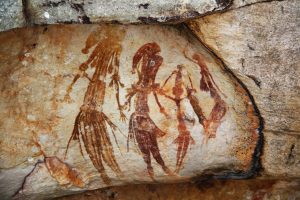
Mgahinga Gorilla National Park: Located in Southwestern Uganda, Mgahinga is among the tentative UNESCO Sites. Mgahinga protects a diversity of wildlife including the endangered mountain gorillas, black-fronted duikers, golden monkeys, blue monkeys, and African elephants.
UNESCO Biosphere Reserves in Uganda
Currently, there are only 2 UNESCO Man and Biosphere reserves in Uganda including Mount Elgon Biosphere Reserve and Queen Elizabeth Biosphere Reserve. Queen Elizabeth Biosphere Reserve and Game Park lies in Western Uganda astride the equator crossing.
Queen Elizabeth National Park was officially recognized as a Biosphere Reserve in 1979. It is the second largest park occupying 1978 sq. km and protects over 95 mammal species, 620 bird species, and others.
Within Queen Elizabeth Park, there exist abundant fauna including the cape buffaloes, elephants, warthogs, waterbucks, hippos. Chimpanzees, spotted hyenas, giant forest hogs, topis, leopards, lions, Nile crocodiles. African civets, mongoose, serval cats, side-striped jackals, and more.
Mount Elgon Biosphere is situated in the Eastern part of Uganda. This biosphere reserve and park lies at the border between Uganda and Kenya. It supports a total of about 300 bird species and other mammal species. The faunal species to explore here include buffaloes, hyenas, duikers, elephants, and black and white colobus monkeys.
The birds in Mount Elgon Biosphere Reserve and Game Park include Elgon francolins, Sharpe’s long claws, black-shouldered kite. Black-collared apalis, blue flycatchers, chubbs cisticola, endangered lammergeyer. Mustached green tinker bird, crowned hornbills, and many others.
Conclusively, only three sites have been recognized as UNESCO World Heritage Sites in Uganda. They are worth exploring on Uganda safaris. These include Bwindi, Kasubi, and Rwenzori Mountains National Park. In each of the designated UNESCO sites, there is something unique to explore. Plan and book a trip with Native Africa Tours to unearth the hidden treasures in these sites and beyond.
